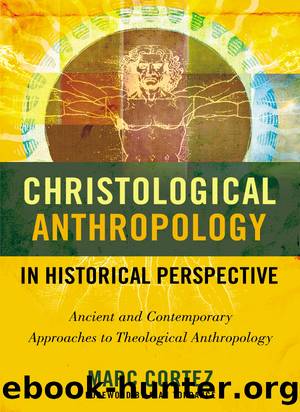Christological Anthropology in Historical Perspective by Marc Cortez

Author:Marc Cortez
Language: eng
Format: epub
Publisher: Zondervan Academic
Published: 2015-12-01T00:00:00+00:00
CHAPTER 5
Embodied Souls
The Ontological Determination of the Human in Karl Barthâs Anthropology
The ontological determination of humanity is grounded in the fact that one man among all others is the man Jesus . . . Theological anthropology has no choice in this matter. It is not yet or no longer theological anthropology if it tries to pose and answer the question of the true being of man from any other angle.
Karl Barth, Church Dogmatics1
ALTHOUGH WE HAVE ALREADY EXPLORED ways in which several earlier figures related Christology to anthropology, few thinkers in the history of the church have pursued a christological anthropology with greater rigor than displayed in Karl Barthâs Church Dogmatics, particularly in III/2 where he argues throughout that a properly theological view of the human person must be thoroughly grounded in Christology as its necessary starting point.2 Not satisfied with abstract claims about the anthropological significance of Christology, Barth demonstrates how this christological orientation reshapes how we understand specific issues like relationality, ontology, and temporality. Barth thus aims for an anthropology that is âchristologically determinedâ throughout,3 firmly convinced that âthe nature of the man Jesus alone is the key to the problem of human nature.â4
In this chapter, we will consider the way Barthâs christological anthropology shaped his approach to the mind/body relationship, a question that has received significant attention in the modern era among scientists, philosophers, biblical scholars, and theologians alike. Unlike most, however, Barth argued that even something as apparently esoteric as the interaction between âmindâ and âbodyâ can only be rightly understood from a christological perspective, ultimately grounding the issue in Christology, pneumatology, and the covenantal relationship between God and human persons. In the end we will see that although Barthâs approach does not give us a definitive answer to whether we should understand the human person in terms of dualism or materialism, he offers a robustly christological framework within which to assess the theological adequacy of any particular proposal for human ontology.
THE ONTOLOGICAL DETERMINATION OF HUMANITY
Barth builds his understanding of the human person on the claim that a properly Christian anthropology is âgrounded in the fact that one man among all others is the man Jesus.â If we attempt to understand the human from any other vantage point, we will be limited to âthe phenomena of the human,â or those things about the human that can be known from nontheological perspectives.5 Although studying such phenomena can helpfully illumine our understanding of humanity, we cannot learn about true humanity unless we view the human person through the lens provided by Jesus himself. As Barth boldly declares, âTheological anthropology has no choice in this matter. It is not yet or no longer theological anthropology if it tries to pose and answer the question of the true being of man from any other angle.â6 To see precisely why Barth thought that Jesus is the âArchimedean pointâ from which we can establish some knowledge of true humanity, we will need to understand what Barth said about election, the sinlessness of Christ, and the idea that we have been summoned through Jesus into a particular relationship with God.
Download
This site does not store any files on its server. We only index and link to content provided by other sites. Please contact the content providers to delete copyright contents if any and email us, we'll remove relevant links or contents immediately.
Machine Learning at Scale with H2O by Gregory Keys | David Whiting(4121)
Never by Ken Follett(3767)
Fairy Tale by Stephen King(3198)
The Man Who Died Twice by Richard Osman(2982)
Reminders of Him: A Novel by Colleen Hoover(2931)
Will by Will Smith(2772)
Rationality by Steven Pinker(2276)
It Starts With Us (It Ends with Us #2) by Colleen Hoover(2178)
Can't Hurt Me: Master Your Mind and Defy the Odds - Clean Edition by David Goggins(2165)
Friends, Lovers, and the Big Terrible Thing by Matthew Perry(2101)
The Becoming by Nora Roberts(2067)
The Stranger in the Lifeboat by Mitch Albom(2035)
Love on the Brain by Ali Hazelwood(1939)
New Morning Mercies: A Daily Gospel Devotional by Paul David Tripp(1866)
The Strength In Our Scars by Bianca Sparacino(1768)
HBR's 10 Must Reads 2022 by Harvard Business Review(1765)
A Short History of War by Jeremy Black(1745)
Never Finished: Unshackle Your Mind and Win the War Within by David Goggins(1626)
515945210 by Unknown(1585)
